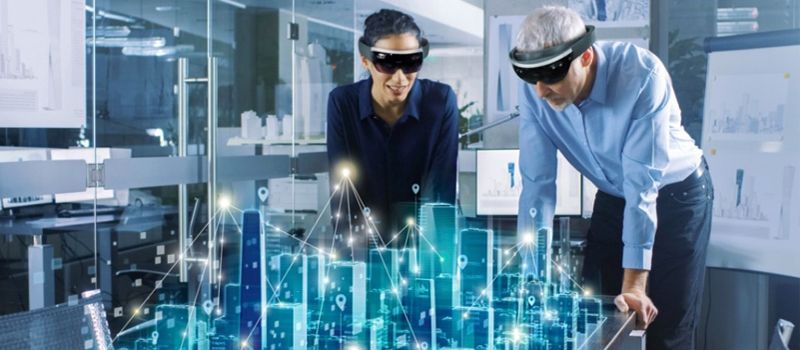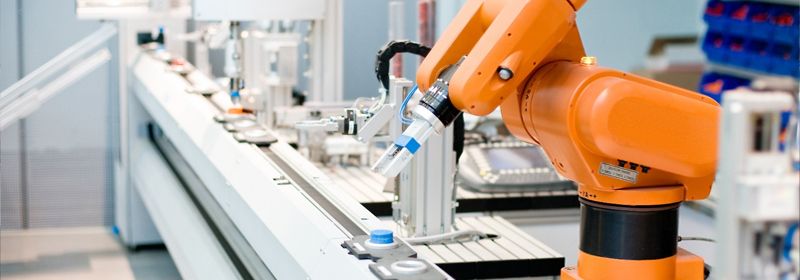
What are Cyber Physical Systems?
The word “Cyber Physical Systems” was first introduced in 2006 by Ellen Gill. This is the next-generation computing system under the category of embedded systems. CPS makes use of smart computational techniques that are related to both computational units and the physical world. This implies that CPS uses computation, communication, and controls to interact with real-world systems.
CPS is a combination of two parts; the cyber components and the physical components. This is why it is called Cyber-Physical Systems. CPS is embedded in products like planes, cars, and other devices to carry out particular tasks.
Take, for instance, an ABS or Anti-Skid Braking System that can be embedded in a car to help control the braking force of the car. The system communicates with the physical environment via actuators and sensors. The embedded system shares data with communication networks like the internet via cloud computing. This allows for data from various embedded systems to be gathered and processed – this is in a way a “system of systems”. These collected data are automatically processed or handled by a Human Machine Interface (HMI), and the connected systems are decentralized and controlled by the computational unit.
Characteristics of the Cyber Physical Systems
Cyber-Physical Systems are backed by two types of computing systems. These are:
- Desktop servers, PCs, and Notebooks.
- Embedded computing
These computing systems bring forth certain characteristics in Cyber-Physical Systems:
- User friendly: All Cyber-Physical Systems are user-friendly and can be easily used by anyone in any field, including engineering, manufacturing, transportation, and even health care.
- Functionality: due to the link of Cyber-Physical Systems as a “System of Systems”, it gives it a more robust functionality across various areas.
- Network: Cyber-Physical Systems are built for communication and based on network cooperation. Furthermore, Cyber-Physical Systems also make use of the latest network technology like cloud solutions.
- Intelligence: Cyber-Physical Systems are robust and intelligent in the implementation of embedded network solutions. Furthermore, the adaptive nature of the system gives it the intelligent characteristics as it develops more as time goes on.

Real-life Applications of Cyber-Physical Systems
Let us take a look at some real application of Cyber-Physical Systems, but it is worthy of note that many systems working based on the CPS make use of wireless network sensors to monitor the environment and send the information to a central node. Other CPS utilizes autonomous automotive systems (AAS), distributed robotics, smart grid, and automatic pilot avionics.
Distributed Robotics
One application of CPS is seen in distributed robotics as shown by MIT using a distributed robot gardening system. This involves a team of robots that tend a garden of tomato plants using a combination of distributed sensing, manipulation, navigation, and wireless networking.
Manufacturing
In the manufacturing sector, Cyber-Physical Systems are mostly applied to self-monitoring of production processes and operations. The manufacturing process is improved tremendously by the information that is shared between machines, business systems, supply chains, suppliers, and customers. This can be referred to as smart manufacturing. This provides better visibility control of the supply chain, thereby enhancing better security and traceability of products.
Furthermore, the use of sensors in the manufacturing industry helps to predict when equipment wears out and also diagnose faults in machines and equipment. Proper analysis of these data improves the operational performance of equipment and reduces maintenance costs.
Water Distribution
The use of automation in water distribution systems has seen an increase in recent times. Thanks to systems like the CPS. The water distribution systems consist of pipes, wells, pumps, tanks, and reservoirs that deliver water to our homes. The systems make use of devices to monitor different activities of the water distribution system. For instance, a sensor can be used to detect the level of water overflow from a pressure pipe or a tank. Programmable control logic is also embedded into the systems to automatically open valves.
Although this system makes water distribution more efficient, it has a drawback – hackers can get access to information remotely and cause many damages. The solution to this is to make use of two tools; an “Attack Model” and a “Toolbox”. The Attack Model lays out the different ways an attacker might compromise the system while the toolbox runs MATLAB – which is common software in the Engineering and computing sector – to gather the info from the attack model and runs on Epanet. An Epanet is a standardized software that helps describe the flow of water through systems. The Epanet works with the toolbox to track both the Physical status and the cyber status of the system. This helps in detecting any external changes by any attacker or hacker.
Smart Greenhouses
When it comes to agriculture, Cyber-Physical Systems play a major role in improving productivity and preventing starvation. The system focuses on adaptive parameters like temperature, amount of light, irrigation, and humidity. These parameters are designed to respond to specific computer programs to ensure better growth. The system also reports feedback continuously to the user to help them know the condition of the greenhouse at all times. The feedback can be remotely managed using network services. Furthermore, sensors are attached to the designs as station sensors for temperature, soil moisture, light sensor, and humidity. Also, sensors are placed for the humidity and temperature control whereby the sprinklers and fans can be controlled to either increase or decrease the temperature.
The benefits of the Cyber-Physical system to the agricultural sector through smart greenhouses are enormous. One such benefit is the reduction in cost, saving of farmer’s time, and effort. Also, it provides a better environment for increased productivity.
Health Care
Cyber-Physical Systems are widely used in the medical sector for real-time monitoring and sensor control of patient conditions. This helps in improving the treatment for the elderly and disabled, thereby limiting the hospitalization of patients. This system is further improved by combining a network closed loop with a human loop to help improve the workflow and the security of the system.
Smart Buildings
Cyber-Physical Systems improves energy efficiency in buildings while reducing energy consumption and greenhouse emission. The system is built to sense and detect humidity, temperature, and other actuators like the water heater, HVAC, and fans.
Transportation
With Cyber-Physical Systems, cars can communicate with each other to share information like traffic, location, and issues on the road to prevent accidents and improve safety. Another instance under transportation is the use of ABS or Anti-skid braking system to prevent potential collision and bring the car to a halt.
In conclusion, Cyber-Physical Systems are a “system of systems” that are intelligent enough to combine software and hardware through connected networks. In other words, it merges the physical world with the cyber world to enhance productivity in different fields, including Engineering, healthcare, transportation, smart buildings, smart greenhouses, and many more.
Contact us to talk to an expert about how you can implement these Cyber Physical Systems to improve your manufacturing plant or application.
